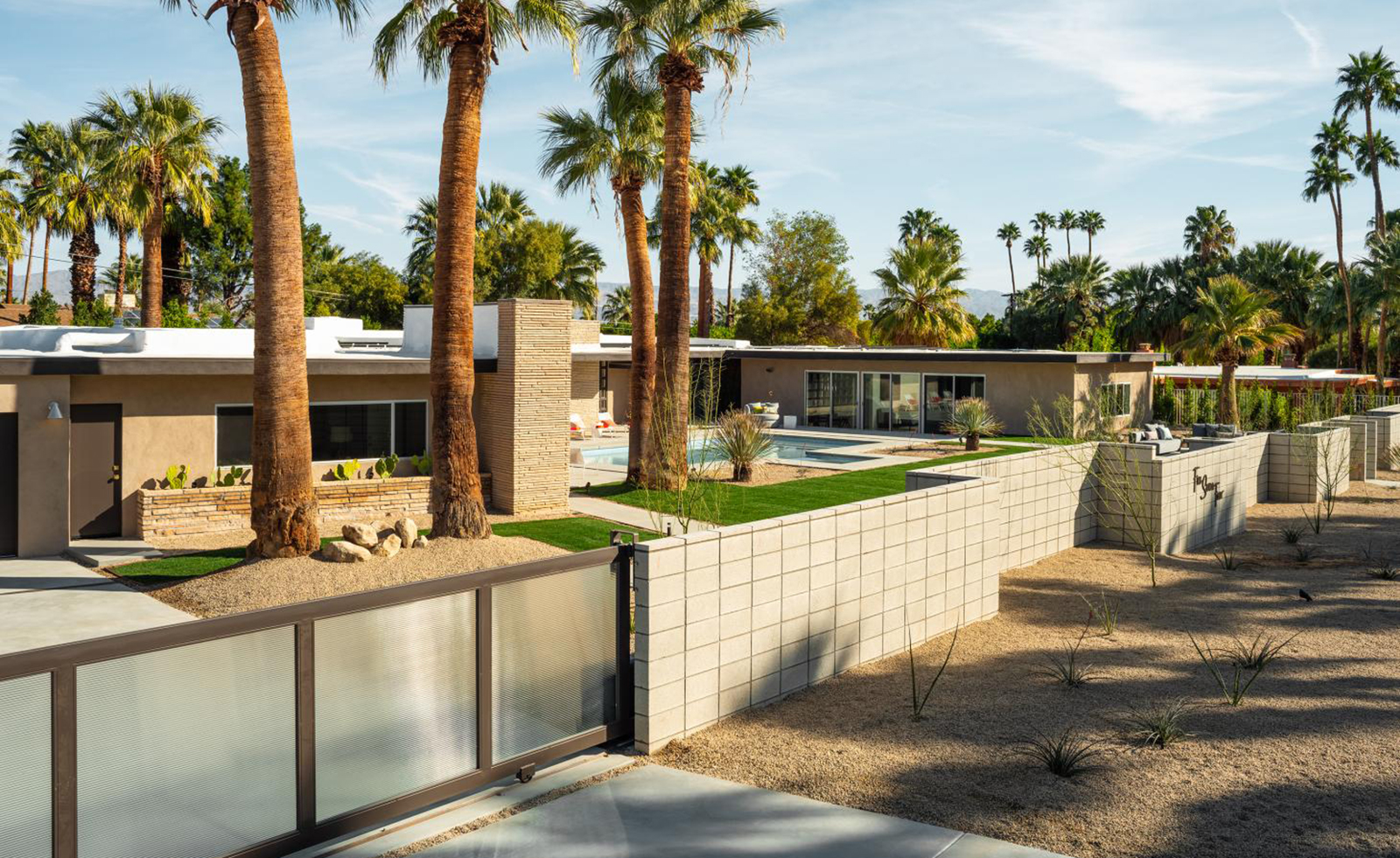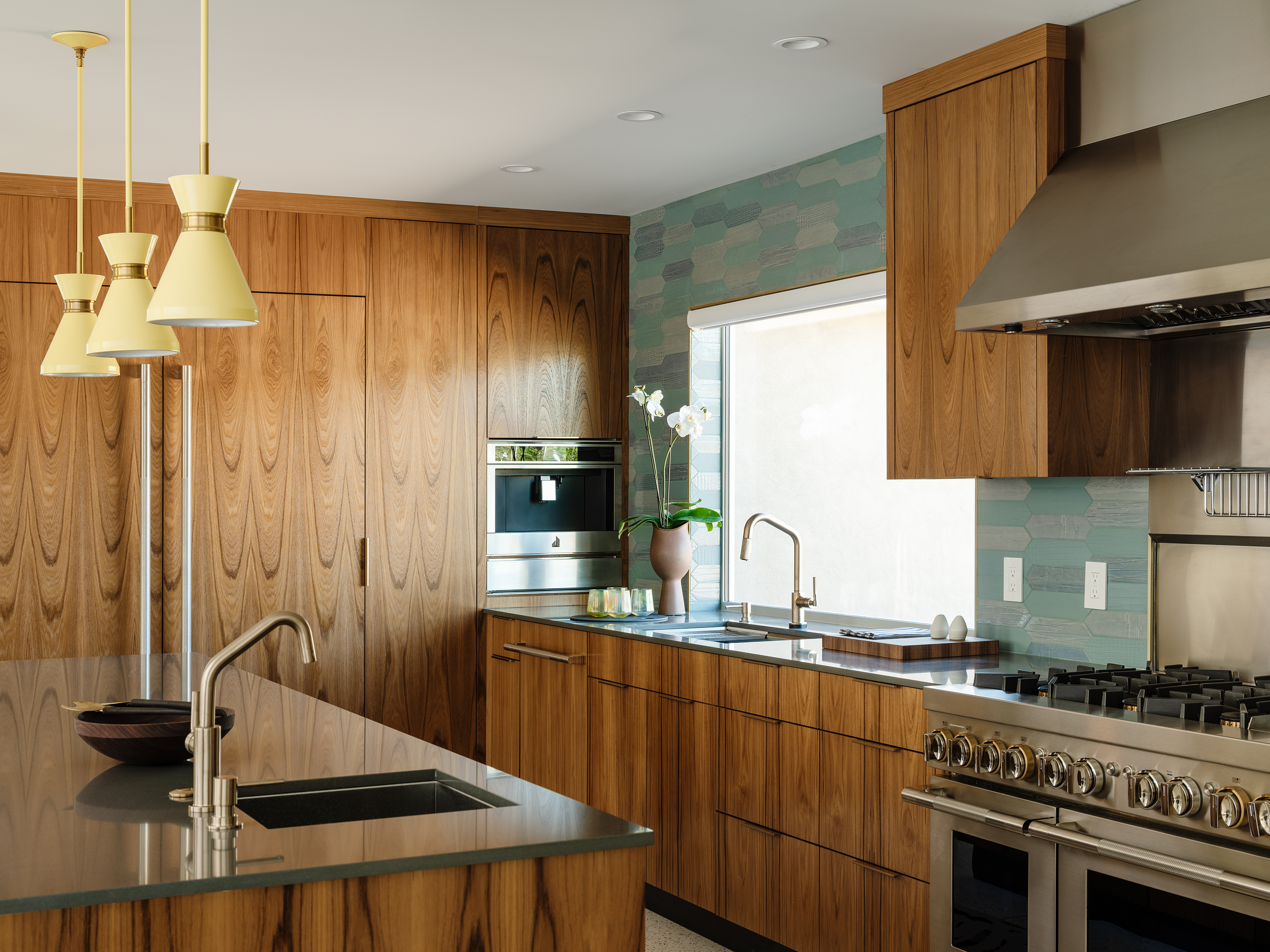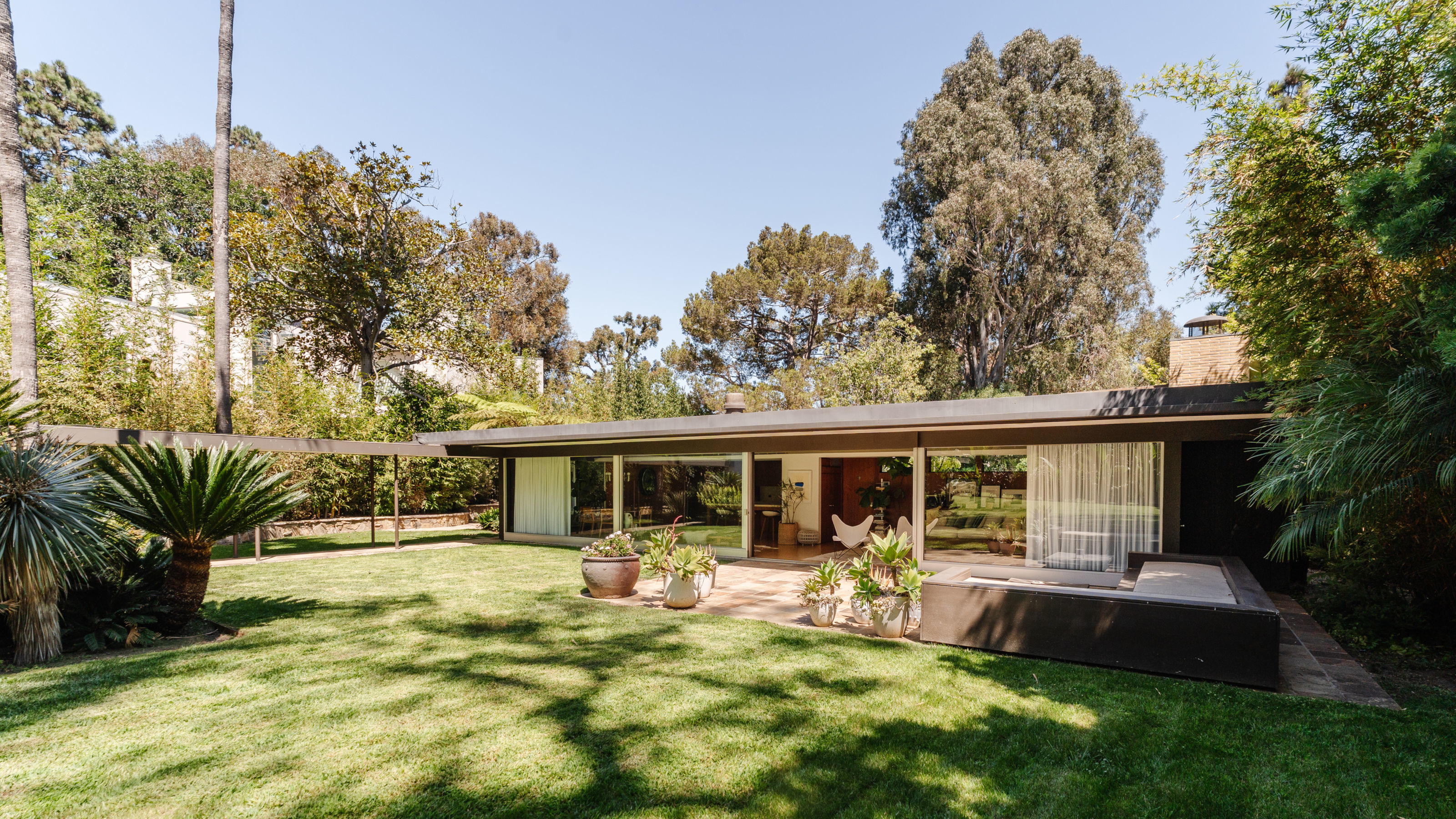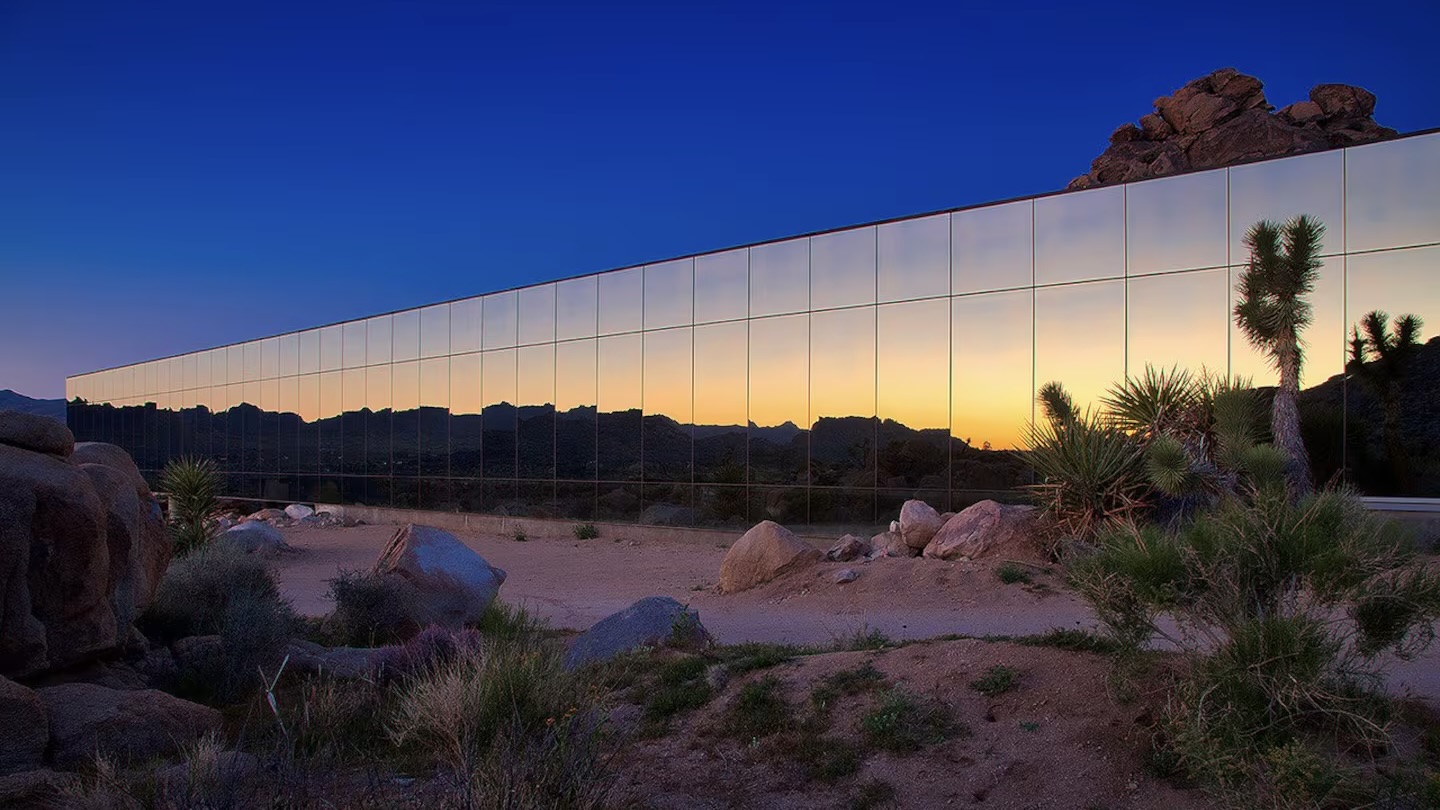Herbert W Burns’ Gillman Residence renovated in Palm Springs
A Palm Springs house designed by architect Herbert W Burns has been brought back to life, with plenty of contemporary improvements. ‘This house can truly be considered a brand new home with Herbert Burns’ bones’ say the designer-developer duo behind the comprehensive restoration and renovation

Dynamic duo Jackie Thomas and DeAnn McCoy are behind the renovation of Herbert W Burns' Gillman Residence in Palm Springs originally built in 1948. The house, which was inspired by the architecture of Frank Lloyd Wright, has been brought back to life with careful attention to historical details and new interiors that reflect a contemporary approach to mid-century modern design.
The pair started developing and designing in 2005, when they bought a property in the Canyon View Estates designed by Palmer & Krisel. In 2010, they made their passion for mid-century modern architecture official and moved to Palm Springs to formally set up Thomboy Properties, Inc. with a philosophy to 'respect the beauty and simplicity of design from the past and re-imagine it for the way people live today'.
Their latest re-imagination is the Gillman Residence, a house that was sitting neglected prior to their intervention, but was a hit when it was first built. The house was referred to as a ‘sophisticated sun seeker’ in the January 1951 issue of the Los Angeles Times Home Magazine. It was total fate that Thomboy Inc. found the property after a tip-off from a local realtor, and they made an offer after 30 minutes of seeing it.

Located in the neighbourhood of Little Tuscany, the 4,700 sq ft, three bedroom house, which also features a two bedroom guesthouse and a rectangular pool, is like a small complex sprawled across its half-acre lot. With its flat roofs, cantilevering overhangs and horizontal lines, the house design was inspired by the architecture of Frank Lloyd Wright and Le Corbusier in the Late Moderne style.
Like many desert modern houses, the Gillman Residence responded to the landscape by reflecting the natural colours of the desert through screens, grids of ribbed obscure glass and planters of Arizona sandstone. The lines betweeen indoor and outdoor living were blurred with Burns' trademark Santa Fe block brick that runs from the exterior wall into the heart of the house. Wide overhangs extend over the immediate outdoor space creating shade from the sun. Many of these elements were restored by Thomboy Inc. with the assistance of Steven Keylon, Burns’ architectural historian, after they had been removed by previous owners.
While the original house design was respected, the renovation has been comprehensive. ‘This house can truly be considered a brand new home with Herbert Burns’ bones. Every single surface has been touched, from all new electrical, plumbing, HVAC, windows, roof, and poured terrazzo floors, the landscape, you name it, we touched it,’ says Thomas.
For Thomas and McCoy, the project was a learning curve in understanding the differences between restoration and renovation, while, as developers, always thinking about the end sale. ‘We would say the delicate dance of restoring the house to its original grandeur while balancing the expectations of today’s buyers was constantly in the forefront of our minds,’ says Thomas.





INFORMATION
Receive our daily digest of inspiration, escapism and design stories from around the world direct to your inbox.
The restoration of house was supported by Ferguson, JennAir, Brizo, Dunn-Edwards, Corian Design, Room & Board, Hunter Douglas, FLOR and Bang & Olufsen
Harriet Thorpe is a writer, journalist and editor covering architecture, design and culture, with particular interest in sustainability, 20th-century architecture and community. After studying History of Art at the School of Oriental and African Studies (SOAS) and Journalism at City University in London, she developed her interest in architecture working at Wallpaper* magazine and today contributes to Wallpaper*, The World of Interiors and Icon magazine, amongst other titles. She is author of The Sustainable City (2022, Hoxton Mini Press), a book about sustainable architecture in London, and the Modern Cambridge Map (2023, Blue Crow Media), a map of 20th-century architecture in Cambridge, the city where she grew up.
-
 Winston Branch searches for colour and light in large-scale artworks in London
Winston Branch searches for colour and light in large-scale artworks in LondonWinston Branch returns to his roots in 'Out of the Calabash' at Goodman Gallery, London ,
-
 The most anticipated hotel openings of 2026
The most anticipated hotel openings of 2026From landmark restorations to remote retreats, these are the hotel debuts shaping the year ahead
-
 Is the future of beauty skincare you can wear? Sylva’s Tallulah Harlech thinks so
Is the future of beauty skincare you can wear? Sylva’s Tallulah Harlech thinks soThe stylist’s label, Sylva, comprises a tightly edited collection of pieces designed to complement the skin’s microbiome, made possible by rigorous technical innovation – something she thinks will be the future of both fashion and beauty
-
 The Architecture Edit: Wallpaper’s houses of the month
The Architecture Edit: Wallpaper’s houses of the monthFrom wineries-turned-music studios to fire-resistant holiday homes, these are the properties that have most impressed the Wallpaper* editors this month
-
 This modernist home, designed by a disciple of Le Corbusier, is on the market
This modernist home, designed by a disciple of Le Corbusier, is on the marketAndré Wogenscky was a long-time collaborator and chief assistant of Le Corbusier; he built this home, a case study for post-war modernism, in 1957
-
 Louis Kahn, the modernist architect and the man behind the myth
Louis Kahn, the modernist architect and the man behind the mythWe chart the life and work of Louis Kahn, one of the 20th century’s most prominent modernists and a revered professional; yet his personal life meant he was also an architectural enigma
-
 The Architecture Edit: Wallpaper’s houses of the month
The Architecture Edit: Wallpaper’s houses of the monthFrom Malibu beach pads to cosy cabins blanketed in snow, Wallpaper* has featured some incredible homes this month. We profile our favourites below
-
 Three lesser-known Danish modernist houses track the country’s 20th-century architecture
Three lesser-known Danish modernist houses track the country’s 20th-century architectureWe visit three Danish modernist houses with writer, curator and architecture historian Adam Štěch, a delve into lower-profile examples of the country’s rich 20th-century legacy
-
 The Architecture Edit: Wallpaper’s houses of the month
The Architecture Edit: Wallpaper’s houses of the monthThis September, Wallpaper highlighted a striking mix of architecture – from iconic modernist homes newly up for sale to the dramatic transformation of a crumbling Scottish cottage. These are the projects that caught our eye
-
 Richard Neutra's Case Study House #20, an icon of Californian modernism, is for sale
Richard Neutra's Case Study House #20, an icon of Californian modernism, is for salePerched high up in the Pacific Palisades, a 1948 house designed by Richard Neutra for Dr Bailey is back on the market
-
 The best of California desert architecture, from midcentury gems to mirrored dwellings
The best of California desert architecture, from midcentury gems to mirrored dwellingsWhile architecture has long employed strategies to cool buildings in arid environments, California desert architecture developed its own distinct identity –giving rise, notably, to a wave of iconic midcentury designs